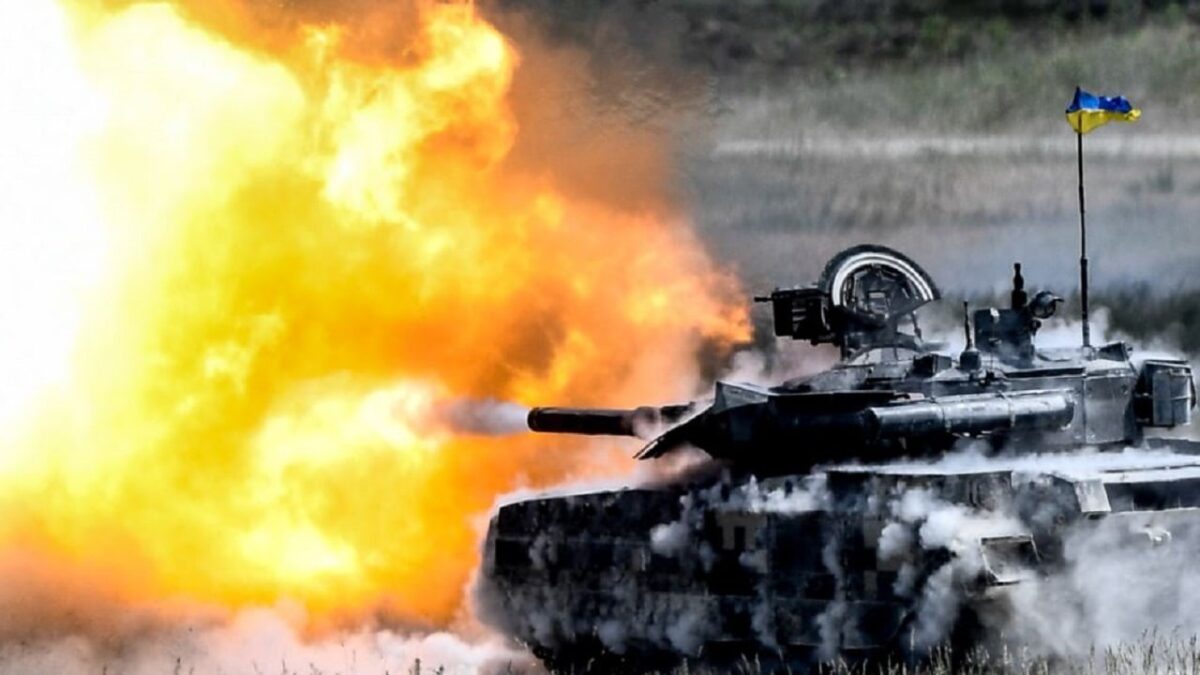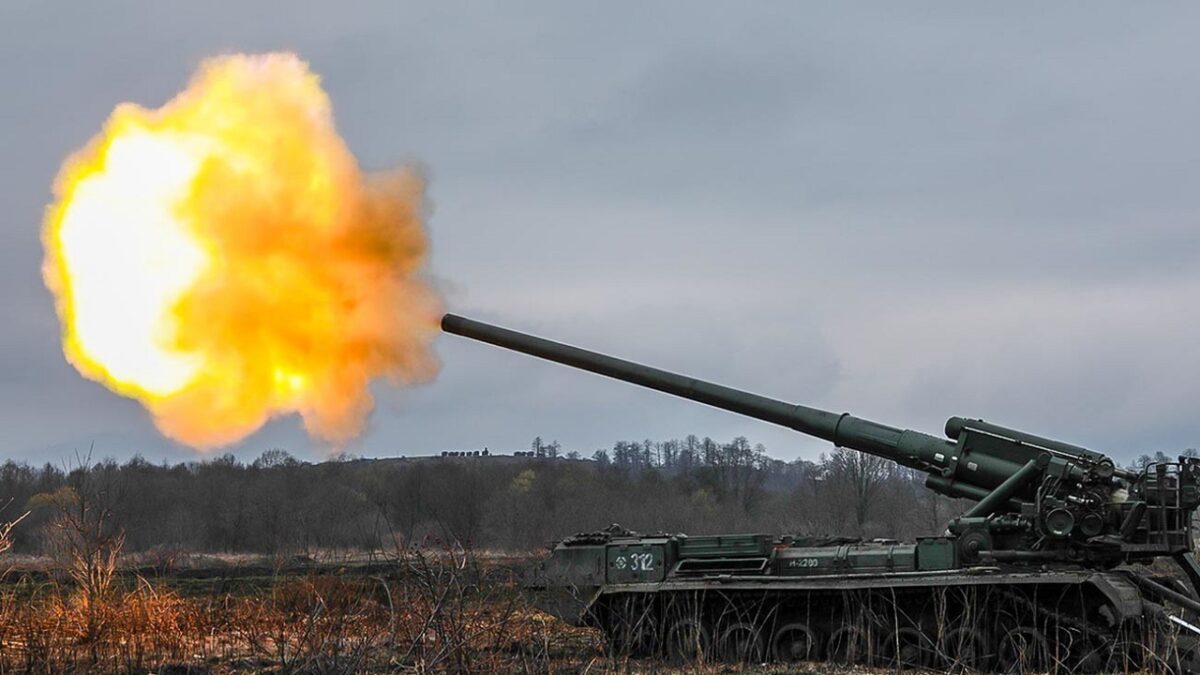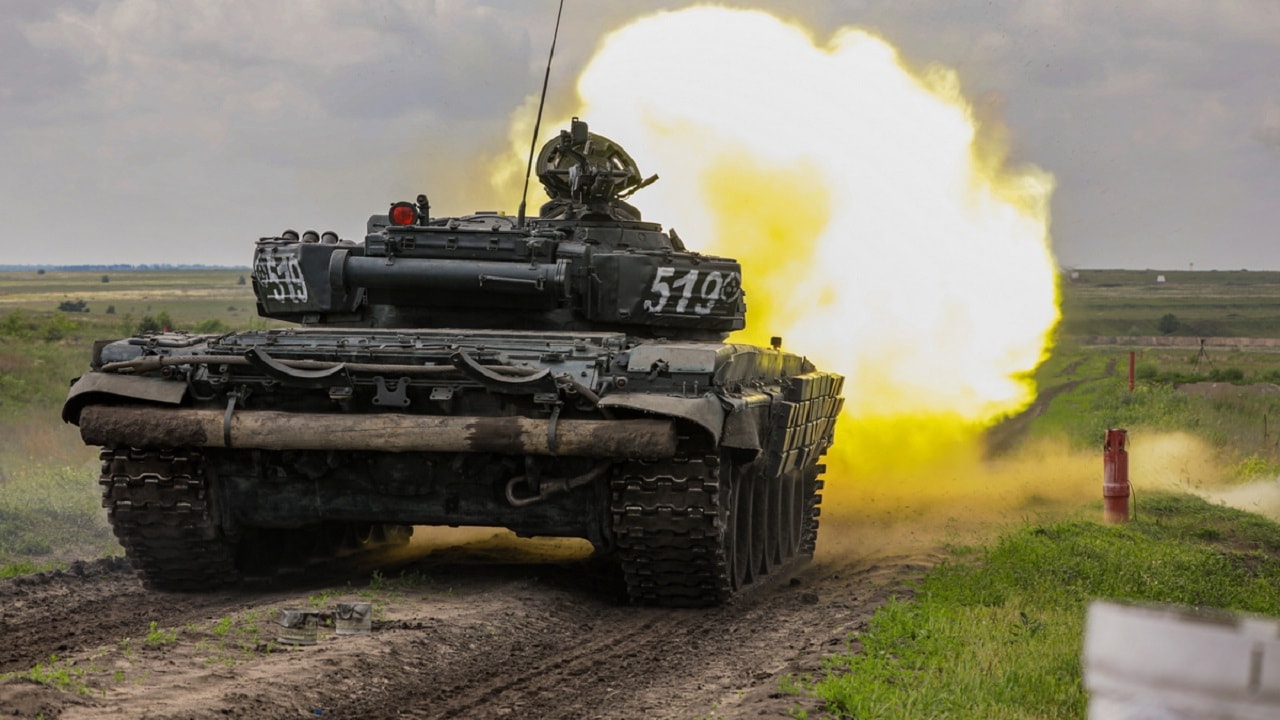On day 64 of the Russian invasion of Ukraine, the Russian military is gaining some ground in eastern Ukraine after repeated failures to achieve a major breakthrough. The Ukrainian defenders are putting up stiff resistance in the Donbas, while the last Ukrainian troops in Mariupol are still fighting in the Azovstal steelworks plant.
Heavy Fighting In the East
There is heavy fighting around Izium and Kramatorsk in the Donbas, where the Russian forces from the north are trying to link up with Russian troops in the south and trap or force to retreat any Ukrainian military units there.

Ukrainian tank firing. Image Credit: Creative Commons.
The Ukrainian Ministry of Defense claimed that as of Thursday, Ukrainian forces have killed approximately 22,800 Russian troops (and wounded approximately thrice that number), destroyed 187 fighter, attack, and transport jets, 155 helicopters, 970 tanks, 431 artillery pieces, 2,389 armored personnel carriers, 151 Multiple Launch Rocket Systems (MLRS), eight boats, 1,688 vehicles, 76 fuel tanks, 72 anti-aircraft batteries, 215 unmanned aerial systems, 31 special equipment platforms, such as bridging vehicles, and four mobile Iskander ballistic missile systems.
Casualties are mounting quickly in just more recent fighting as well. In only three days of fighting, the Ukrainian military has claimed to have destroyed 86 Russian tanks, 20 artillery pieces, 132 armored personnel carriers, and 122 vehicles, among other Russian equipment.
The Russian Navy, despite the loss of the ballistic missile cruiser Moskva, its Black Sea Fleet flagship, is still a player, according to the British Ministry of Defense.
“Approximately 20 Russian Navy vessels are currently in the Black Sea operational zone, including submarines. The Bosporus Strait remains closed to all non-Turkish warships, rendering Russia unable to replace its lost cruiser Moskva in the Black Sea. Despite the embarrassing losses of the landing ship Saratov and cruiser Moskva, Russia’s Black Sea Fleet retains the ability to strike Ukrainian and coastal targets,” the British Military Intelligence assessed.
Real-Time Intelligence
New reports highlight the extent of intelligence sharing that has been going on between the U.S. and Ukraine.
“There has been a lot of real-time intelligence shared in terms of things that could be used for specific targeting of Russian forces,” including commercial satellite images, “but also a lot of other intelligence about, for example, where certain types of Russian units are active,” a former senior intelligence official told NBC News.
In response to the reports, the White House stated that the U.S. government is providing timely and detailed intelligence to the Ukrainian military on the battlefield, suggesting that the U.S. continues to supply the Ukrainians with tactical intelligence. But the U.S. is also sharing strategic intelligence, such as about the plans and intentions of the Russian military in general.
One example of this intelligence sharing between the U.S. and Ukraine concerns the Ukrainian anti-aircraft capability. The U.S. Intelligence Community is sharing such detailed information with the Ukrainians that the latter are able to move their anti-aircraft defenses and aircraft around every day so as to avoid being targeted by incoming Russian fire.
The War In the Air
It has been over two months since the first Russian troops invaded Ukraine on February 24. And yet, despite its numerical and technological superiority, the Russian Aerospace Forces have failed to achieve air dominance over the skies of Ukraine.
The British Ministry of Defense assessed that “Ukraine retains control over the majority of its airspace. Russia has failed to effectively destroy the Ukrainian Air Force or suppress Ukrainian air defences. Ukraine continues to hold Russian air assets at risk.”

The 2S7 Pion (Russian for Peony) with a deadly 203mm gun.
As a result, the Russian aircraft are restricted to only launch stand-off weapons, such as cruise missiles, from great distances. But the Russian advanced weapons arsenal is depleting. Moscow has launched approximately 1,700 ballistic and cruise missiles against targets in Ukraine. And the sanctions imposed by the West will soon have an impact on the Russian military’s capability to resupply its frontline units with advanced weaponry.
The Ukrainian Air Force continues to fly several MiG-29 Fulcrum fighter jets.
“Russian air activity is primarily focused on southern and eastern Ukraine, providing support to Russian ground forces. Russia has very limited air access to the north and west of Ukraine, limiting offensive actions to deep strikes with stand-off weapons. Russia continues to target Ukrainian military assets and logistics infrastructure across the country. The majority of Russian air strikes in Mariupol are likely being conducted using unguided free-falling bombs. These weapons reduce Russia’s ability to effectively discriminate when conducting strikes, increasing the risk of civilian casualties,” the British Military Intelligence assessed.
1945’s New Defense and National Security Columnist, Stavros Atlamazoglou is a seasoned defense journalist specializing in special operations, a Hellenic Army veteran (national service with the 575th Marine Battalion and Army HQ), and a Johns Hopkins University graduate. His work has been featured in Business Insider, Sandboxx, and SOFREP.

